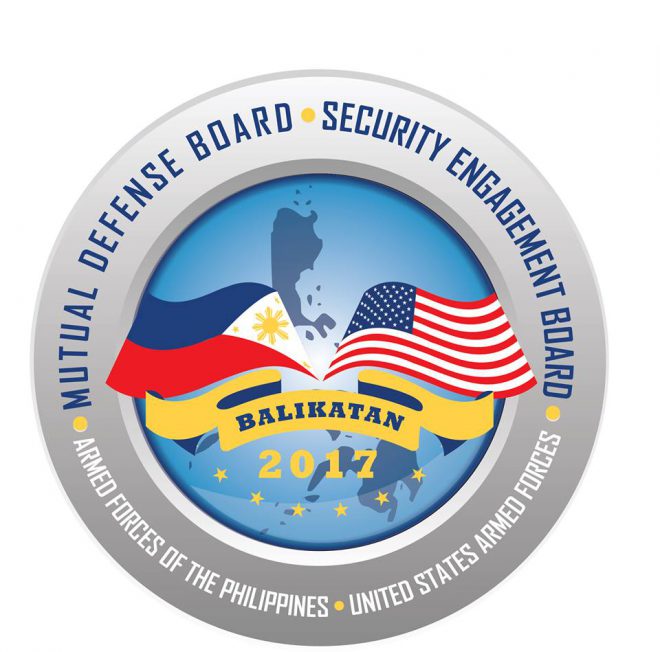Japanese, Australian forces join US and Philippines in disaster rescue drill
May 17, 2017
The Japanese and Australian forces joined the United States and Philippines on its Command Post Staff Exercise (CPX - Staffex) held at the Armed Forces of the Philippines (AFP) Command General and Staff College (CGSC) in Camp Aguinaldo yesterday. This exercise was conducted as part of the activities under the Balikatan 2017. In an ambush interview, Lt. Commander Masahiro Yamada, Exercise and Training Section Japan Joint Staff Office emphasized the humanitarian assistance disaster response (HADR) role of the Japanese based on the scenario which deals with a possible powerful typhoon similar to Super Typhoon Yolanda. “In this event ,Japan is much of HADR task force including one destroyer, one transport ship, one supply ship. This include three helicopters, three transport helicopters, three utility helicopters, six C130 transport aircraft. We are mainly engaged in medical activities and transport relief supplies materials equipment with our HADR task force personnel,” he said. “We maintain and improve our capability or ability regarding to international disaster relief and this time we provide some staff to MNCC Multinational Coordination Center so they can also improve our ability to coordinate. Then we can support exercise in the Philippines and we also improve and deepen our military relationship with the United States, Philippines and Australia,” he added. Major Celeste Frank Sayson, Armed Forces of the Philippines (AFP) Balikatan Public Affairs Director, said the United States Agency for International Development (USAID) and National Risk Reduction and Management Council (NDRRMC) joined the drill. Major Andrew Merz, US Exercise Director, CPX-Staffex Combined Exercise Control Group Balikatan 33-17, said the United States will also provide support logistics needed by the Philippines. “We will provide supports that are not available, things like lift support, also other forms of logistics support needed for the exercise,” he said. “In an actual disaster the US will send several different types of teams down almost immediately within 24 hours, so not only will the USA send their team, there will also be a joint humanitarian assistance team that flies in for the US military to start coordinating with the AFP for the initial response,” he added “Often times there are US military forces in the region like in Japan that can respond quickly within 24 -72 hours,” Merz noted. Wing Commandeer Peter Hartley, Australian contingent commander, said they can also provide logistic and engineering capabilities to Philippines in case of such calamities. “We’ve got some training staff, the MNCC the Multinational Coordinating Center, so the Australian government has responded to a call for assistance from the Philippine government as we provided medical logistical and engineering capabilities to help the people of the Philippines recover from the disaster,” he said. “My staff, coordinating the use of aircrafts, ships, and medical personnel to help the effort respond to the need of the Philippine government and the AFP working closely with the Japanese Self Defense Force in positioning assets when needed,” he added. Philippine Exercise Director, CPX-Staffex Combined Exercise Control Group Balikatan 33-17, Lt Col. Michael Logico said aside from HADR the drills include counter terrorism. “It’s the command post exercise. Here we are simulating and we are training the staff, the crisis action plan on HADR operations with a little hint of counter terrorism,” he said. “During the HADR operation we included a counter terrorism scenarios that will also be a test for the AFP crisis action planning team so the scenario that we developed is a hijacking incident that will disrupt the HADR operation and how the planners can resolve quickly the counter terrorist scenario so that we can move on with the HADR operations,” he added. Robina Asido/DMS
Latest Videos
- THE UNTOLD STORY EXPERT INSIGHTS INTO THE UKRAINE
- NEGOTIATING A NEW ORDER US RUSSIA TALKS ON UKRAIN
- Ukraine: A Pawn in the Geopolitical Game? Will Trump Intervene?
- US VP VANCE CRITICIZES EUROPEAN DEMOCRACIES AT MUNICH SECURITY CONFERENCE
- UNCOVERING THE WEB OF DECEIT: CIA INFILTRATION OF THE MEDIA
- SHIFTING SANDS: TULSI GABBARD’S CONFIRMATION AND THE EVOLVING GLOBAL LANDSCAPE
- FAUCI SCANDAL: A THREAT TO GLOBAL HEALTH AND DEMOCRACY






